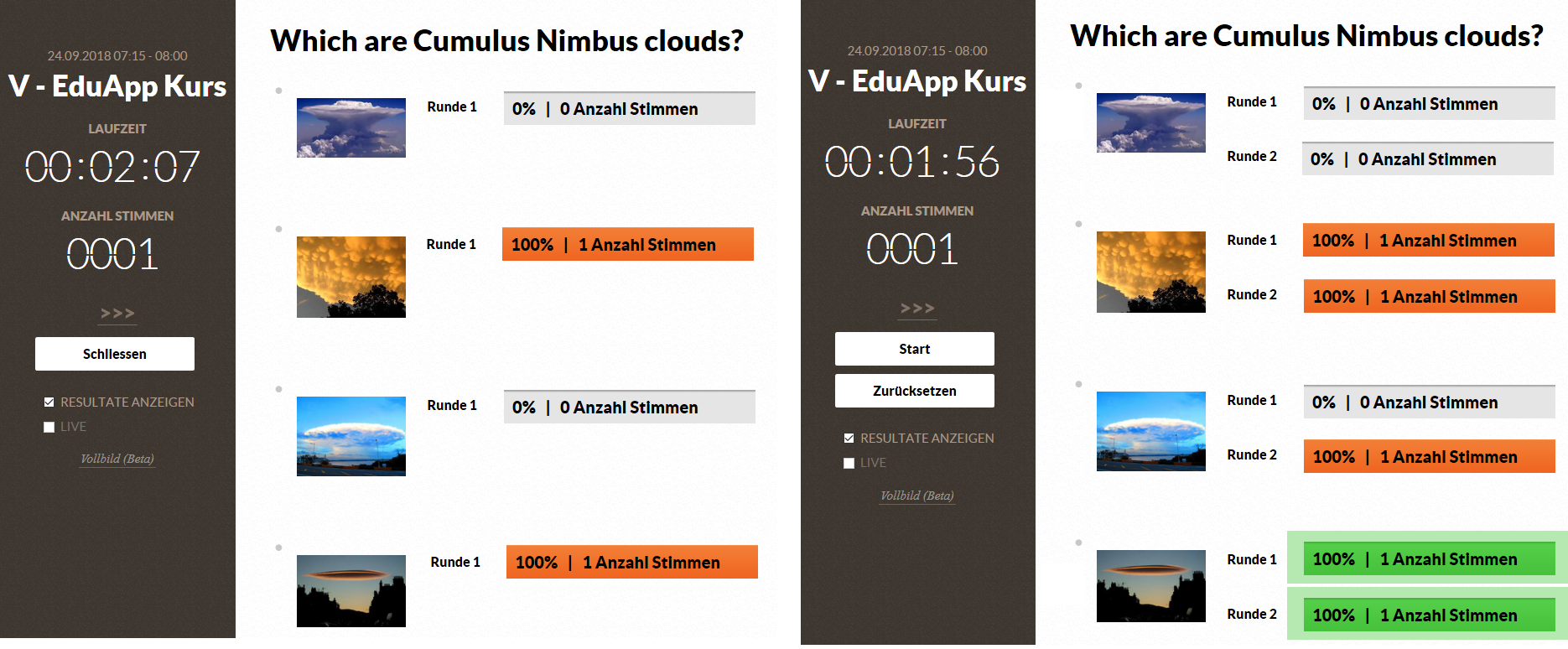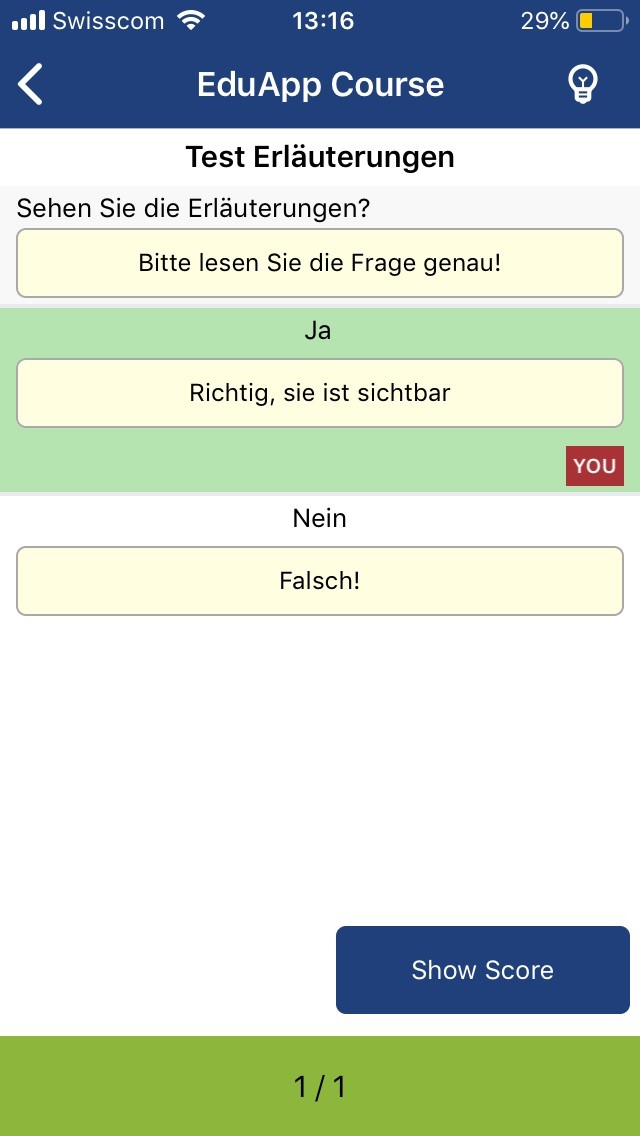EduApp service
The digital ETH card is here!
A new version of EduApp WebApp will be launched at the beginning of the spring semester. In addition to the spring semester timetable, it contains a digital ETH card. This is recognized in the cafeterias, the ETH Library and on the eLink bus.
Please note: The physical ETH card should continue to be used for identification for exams and access to ETH buildings.
EduApp WebApp: https://eduapp.ethz.ch/
EduApp lecturer area: https://eduapp-app1.ethz.ch/
Use the new EduApp and give us your feedback via !
NB: The old EduApp is no longer being developed and will soon be shut down. Please switch to the new EduApp WebApp and also make your students aware that they should use the new WebApp. It contains the same functions as the old EduApp. In addition, it is completely barrier-free.
The EduApp is an interactive smartphone application for studies and teaching at ETH Zurich. It functions as a navigation aid for students in their daily academic lives, and also fosters more interaction during teaching.
The personal timetable based on the courses taken from “myStudies” and ETH plans with the respective course room are displayed for orientation. Lecturers can also create clicker questions. In addition, channels can be set up for communication between students and lecturers, as well as for feedback from students to semester speakers.
Use EduApp and send us your feedback!:
More about the EduApp
HTML editor with MathJax and native Latex

An editor to create clicker questions, based on a standard HTML editor, supports text formatting and text with inline latex formulas. With a preview function, lecturers can get an impression of how the question will look on a mobile device. More information about the new features can be found in the EduApp tutorial.
A MathJax plug-in, integrated into the editor, is used to make Latex formulas. In a few special cases where MathJax is not sufficient, native latex can be used: please contact and we will gladly inform you about the possibilities.
Accessibility
Accessibility requirements have also been taken into account with the clicker editor. Using a screen reader, text and Latex formulas can be read out correctly in English and German.
Semester feedback
As a semester speaker you can edit, start, close and analyze feedback questions/channels from other semester speakers in joint courses. Important: be sure to discuss any changes to surveys with the relevant semester speaker in advance. More information on the semester feedback.
Interim results
A proven and effective teaching method is to pose the same clicker question twice. After the first round, the students’ answers (even if widely correct) are not displayed. Instead, students are given time to discuss the question with their neighbours, after which they answer the question a second time. This second answer is displayed to the students. Discussing and comparing answers with one’s peers can be a valuable learning experience.

Attention: If you click on "Intermediate results", the question will only be paused, and not really closed. Start the 2nd round and click on "Close" to make the question available as a flashcard.
Flashcards for exam preparation

The “Flashcards” function, which replays clicker questions, is designed to help students better prepare for exams. All clicker questions for which one or more answer options have been selected as "correct" are automatically made available as flashcards as soon as they are closed. So you can help students by marking the correct answers and closing the questions correctly. Of course this only makes sense for content questions and not for poll questions.
The EduApp "Flashcards" function was sponsored by «the Rector’s Impulse Fund».
Explanations

When you create a clicker question, you can add comments in the fields "General explanations" and "Specific explanations". After they have submitted their answers, students can click on the “light bulb” icon at the top right-hand corner, and these explanations will appear in flashcards.
After the login to EduApp you will get your personalized study-related information, such as schedule, lecture hall, surveys or chats. The app includes maps functions. When using maps incl. routing, requests are sent anonymously to the map provider skobbler.com. The app also uses a crash/error reporting mechanism for error analysis and is able to submit anonymous usage statistics. The ETH uses these statistics to optimize the apps usability.
Under no circumstances personal data are transmitted, neither during the use of map functions, nor while reporting crash / error and sending usage statistics.
Functional responsibility
Abt. für Lehre und Lernen
Haldenbachstr. 44
8006
Zürich
Switzerland
Support & feedback
Service responsibility
ID Edu Software Engineering
Binzmühlestrasse 130
8092
Zürich
Switzerland

